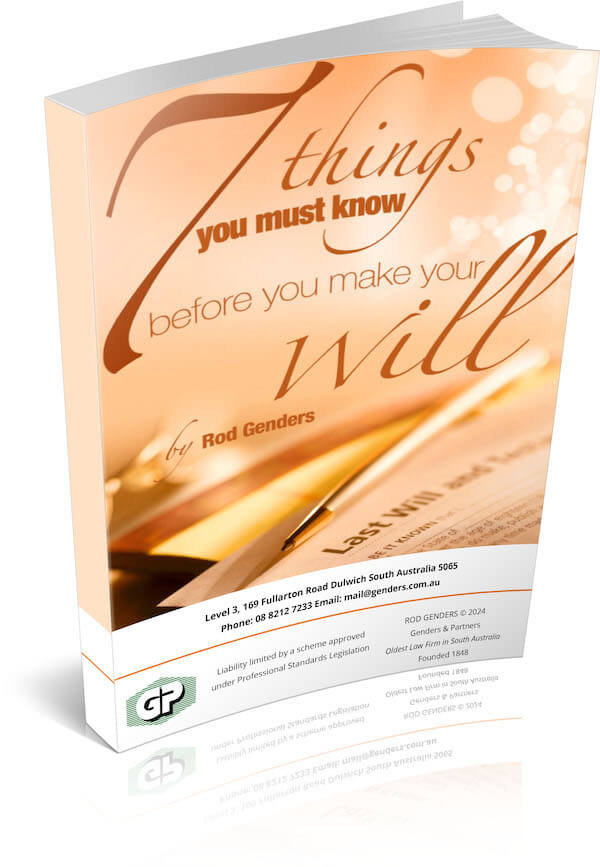
Protecting your assets is one of the most important financial decisions you will ever make. Asset protection is a valuable and important part of a modern integrated estate plan. No matter how many assets you have, you should make an effort to protect them, but try to avoid these common mistakes:
1. Lack of Knowledge
Lots of people misunderstand how asset protection works. Some people believe asset protection makes them “judgment proof.” Even if your assets are protected, you may still cop an adverse court judgment. In some cases, efforts you have made to protect your assets can be overturned. This is why it is important to work with a professional when creating your protection plan.
Don’t make the mistake of assuming asset protection and estate planning are the same thing. Asset protection is part of any strong estate plan but they are not the same thing. Some trusts do nothing to protect you from creditors, and Family Court issues can interfere with the best-laid plans.
Don’t make the mistake of confusing bankruptcy law and asset protection law. In a state like South Australia, newer bankruptcy laws do not prevent the “clawing back” of assets you may have tried to unsuccessfully protect. You have less protection in bankruptcy court, so filing for bankruptcy should be used as a last resort.
2. Fraud
Some people mistakenly commit fraudulent transfers. If you transfer assets to a friend or family member in order to avoid losing the assets during a dispute, you may find it does you no good. Even if this is not illegal, the courts can reverse the transfer and hold the transferee partially responsible.
3. Trying to hide your assets
This is almost impossible nowadays. Even moving assets offshore does not prevent them from being discovered. Eventually, lawyers and investigators will uncover the existence of the asset. In some cases, having the asset offshore may protect it, but it will not prevent it from being discovered. And don’t assume you can outsmart your creditors. Those trying to collect their debt and the lawyers working for them have done this before.
4. Alienate Assets
Some people think they can escape if they hand control of their assets over to someone else. This is called the “poor man’s” asset protection, and involves signing over your wealth to another person. Older people sometimes do this in a misguided attempt to reduce costs & complications later on. This is seldom a good idea, even if he is a trusted friend or family member.
You may have to give up some control at some point, but deciding you will protect your assets by giving them over to a sibling or adult child is a mistake. Discuss your options with an experienced asset protection lawyer before proceeding.
5. Delay
Don’t just assume that it is too late to establish an asset protection plan. It is never too late to do this. Doing something is better than just allowing the courts to have their way with you. At least make an effort to protect your assets. You never know when you may be faced with a situation where your assets are at risk.
The longer your asset protection plan has been in place, the stronger it will be. It will also cost less to do the planning long before you have a problem. Once a lawsuit has been filed against you, any transfers you make can be overturned. In order to battle a lawsuit effectively, make sure you have an asset protection plan in place long before you need it.
6. Incorrectly registering or “titling” your assets
In my work, I see many clients who are convinced that their assets are appropriately titled, only to discover serious errors upon checking. This is often a case where the weakest link in the chain (maybe some teenage clerk at a busy registry office) has mis-described the asset or its owners. Correct registration of assets is critical to the ownership & control tests which underpin all of your legal protections.
7. Deferring or delaying your protection planning
If you wait too long, it will be too late. Like insurance, you generally cannot apply for protection after the disaster has already struck. The longer your asset protection plan has been in place, the stronger it is likely to be. It will also cost less to do the planning long before you have a problem. Once a lawsuit has been filed against you, any transfers you make thereafter can be prevented or overturned. Make sure you have your asset protection plan in place and up to date long before you need it.
8. Mistakenly committing fraudulent transfers
If you try to transfer assets to a friend or family member in order to avoid losing them during a settlement, you may find that the courts can reverse the transfer and hold the parties to the transfer partially responsible for criminal &/or civil penalties. People really have gone to jail for attempting this. However, if the transfer is done carefully, and well before any litigation arises, then this strategy can be made to work in certain circumstances.
9. Misunderstanding how asset protection works
Asset protection rarely makes you “judgment proof,” because even if your assets are protected, you may still face judgment. In some cases, efforts you have made to protect your assets can be overturned. This is why it is important to work with a lawyer who specialises in estate planning, and to get your plan in place as soon as possible, and to keep it up to date. Trying to hide your assets. This is rarely possible, and frequently illegal, and not to be encouraged. The costs and consequences of this type of strategy is seldom worth the risk. Even moving assets offshore does not prevent them from being discovered.
10. Assuming you can outsmart your creditors
Professional debt collectors, liquidators, trustees-in-bankruptcy and the lawyers working for them have done this before. In fact they do it all day, everyday. You might think you have a cunning and novel scheme to avoid paying your debts, but the odds are stacked against you figuring out a way around the system.
11. Not keeping your plan up to date
In a state like South Australia, newer bankruptcy laws permit the “clawing back” of assets you may have tried to unsuccessfully protect (too late). Estate planning is not a “set and forget” exercise.
12. Assuming it is too late to establish an asset protection plan
It is never too late to review your options, and create or modify an appropriate plan. Doing something is better than nothing. However, it is important to plan ahead and understand that if you have assets, you are responsible for protecting them. Your asset protection plan is stronger if it was created long before you received notice of legal action. In order to provide the best protection for your assets regardless of what the future holds, contact a lawyer who specialises in estate planning.
SPECIAL REPORT “7 Things You Must Know Before You Make Your Will”
In this report you will Learn:

Why home-made Wills can be a LOT more expensive than you might think.
The secret weapons used by the rich & powerful to protect their assets, and transfer their wealth two or three generations ahead.
How Estate and Trustee Companies make BIG money from “free” Wills.
The Most Common Estate Planning Mistakes, how they can cost your family a fortune, and How to Avoid Them.
The Elements of a Sound Estate Plan – why a Will alone is not enough.
How to Make Sure Your Assets Stay in Your Family and are not lost to creditors, lawsuits or ex-spouses.
How to guard against challenges to your Estate after you’re gone.







